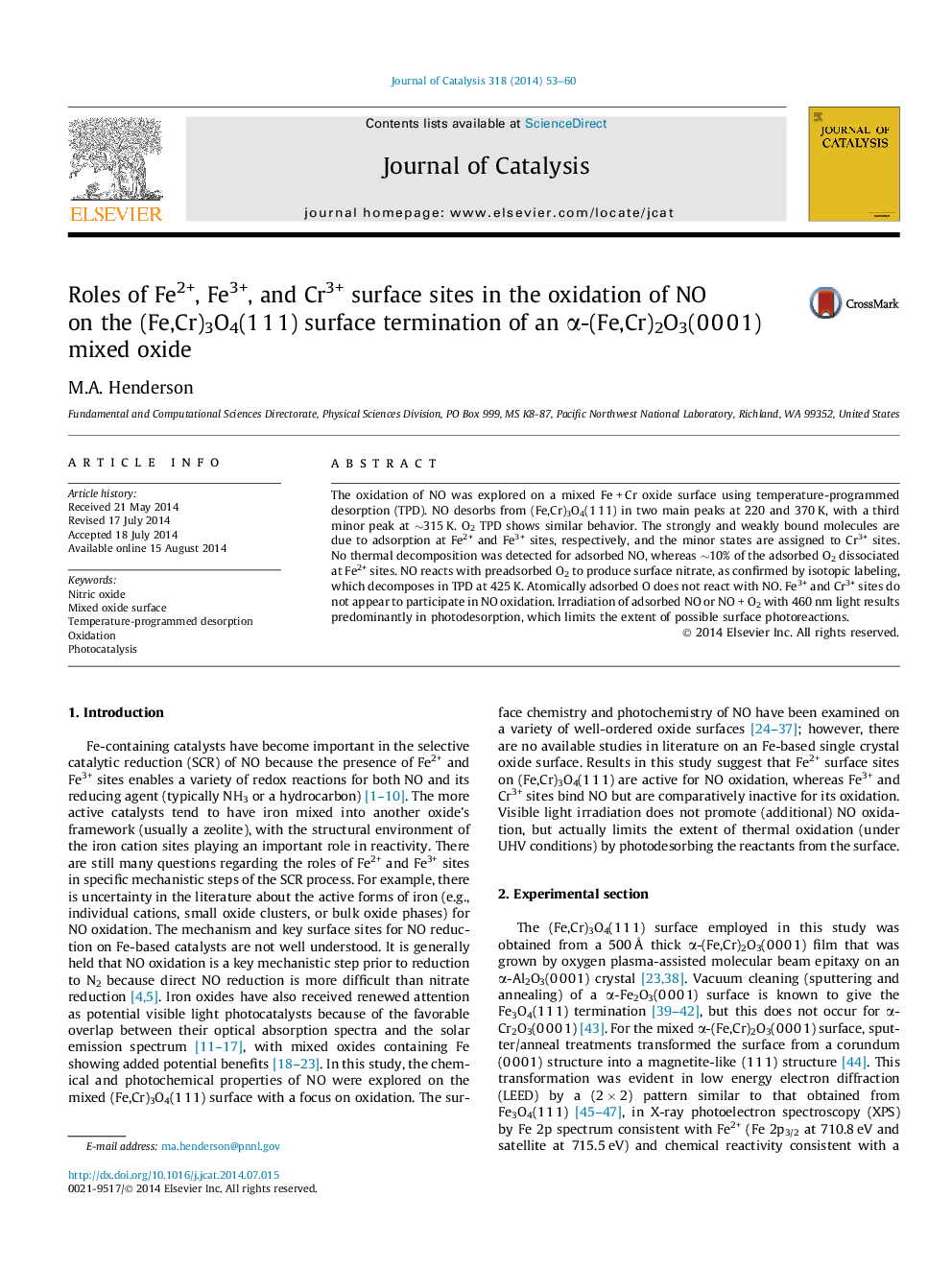| Article ID | Journal | Published Year | Pages | File Type |
|---|---|---|---|---|
| 61060 | Journal of Catalysis | 2014 | 8 Pages |
•The mixed Fe + Cr corundum (0 0 0 1) oxide film employed possessed a magnetite-like (1 1 1) surface structure.•Relative adsorption strengths for NO and O2 at surface sites follow the trend: Fe2+ > Cr3+ > Fe3+.•NO oxidation to nitrate only occurs at Fe2+ sites.•Molecular oxygen is the active form of oxygen for NO oxidation.•Visible light irradiation promotes NO photodesorption but not photooxidation.
The oxidation of NO was explored on a mixed Fe + Cr oxide surface using temperature-programmed desorption (TPD). NO desorbs from (Fe,Cr)3O4(1 1 1) in two main peaks at 220 and 370 K, with a third minor peak at ∼315 K. O2 TPD shows similar behavior. The strongly and weakly bound molecules are due to adsorption at Fe2+ and Fe3+ sites, respectively, and the minor states are assigned to Cr3+ sites. No thermal decomposition was detected for adsorbed NO, whereas ∼10% of the adsorbed O2 dissociated at Fe2+ sites. NO reacts with preadsorbed O2 to produce surface nitrate, as confirmed by isotopic labeling, which decomposes in TPD at 425 K. Atomically adsorbed O does not react with NO. Fe3+ and Cr3+ sites do not appear to participate in NO oxidation. Irradiation of adsorbed NO or NO + O2 with 460 nm light results predominantly in photodesorption, which limits the extent of possible surface photoreactions.
Graphical abstractFigure optionsDownload full-size imageDownload high-quality image (47 K)Download as PowerPoint slide
